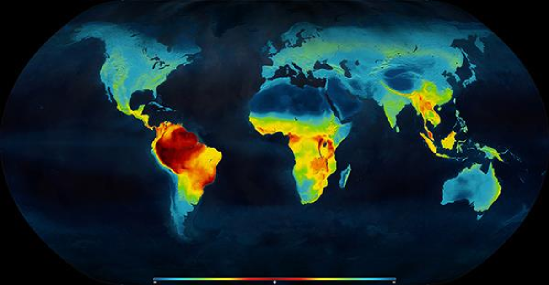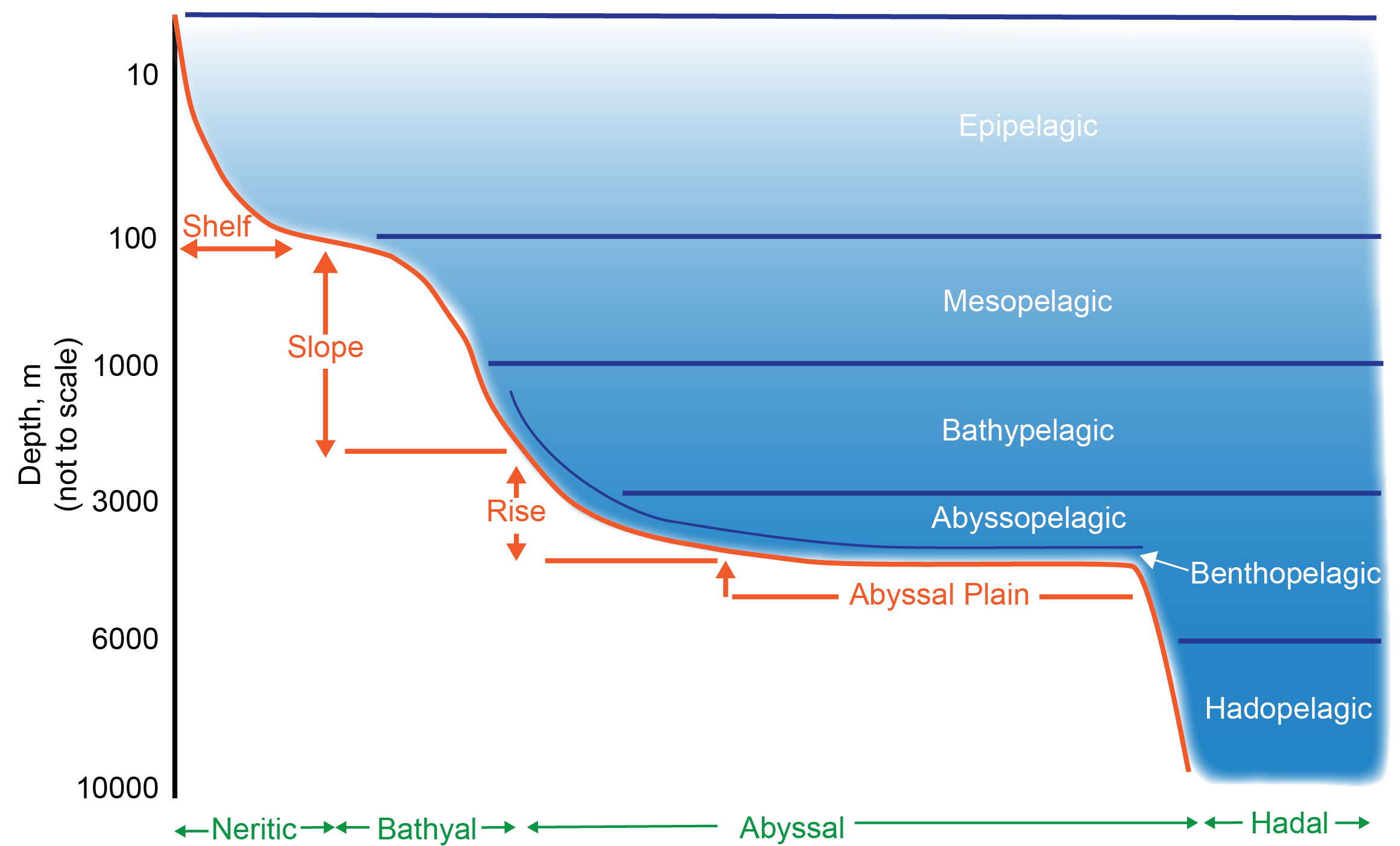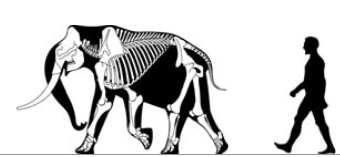|
Thorson's Rule
Thorson's rule (named after Gunnar Thorson by S. A. Mileikovsky in 1971) Mileikovsky, S. A. 1971. ''Types of larval development in marine bottom invertebrates, their distribution and ecological significance: a reevaluation.'' Marine Biology 19: 193-213 is an ecogeographical rule which states that benthic marine invertebrates at low latitudes tend to produce large numbers of eggs developing to pelagic (often planktotrophic lankton-feeding/nowiki>) and widely dispersing larvae, whereas at high latitudes such organisms tend to produce fewer and larger lecithotrophic (yolk-feeding) eggs and larger offspring, often by viviparity or ovoviviparity, which are often brooded.Thorson, G. 1957 Bottom communities (sublittoral or shallow shelf). In "Treatise on Marine Ecology and Palaeoecology" (Ed J.W. Hedgpeth) pp. 461-534. Geological Society of America. Groups involved The rule was originally established for marine bottom invertebrates, but it also applies to a group of parasitic flatworm ... [...More Info...] [...Related Items...] OR: [Wikipedia] [Google] [Baidu] |
Gunnar Thorson
Gunnar Axel Wright Thorson (31 December 190625 January 1971) was a Danish marine zoologist and ecologist, who studied at the University of Copenhagen under the professors C.G. Johannes Petersen, August Krogh, Theodor Mortensen, Ragnar Spärck and Carl Wesenberg-Lund. In 1957, Thorson was appointed professor of marine biology at the University of Copenhagen. Thorson studied planktonic larvae of marine benthic invertebrates. He conceived the idea that in the Tropics, benthos tend to produce large numbers of eggs developing into pelagic and widely dispersing larvae, whereas at higher latitudes they tend to produce fewer and larger eggs and offspring. This idea was later coined Thorson's rule. Thorson participated in the Three-year Expedition to East Greenland led by Lauge Koch. He founded the ''Marine Biological Laboratory'' under the University of Copenhagen and was a professor there 1958–1968. The icebreaker An icebreaker is a special-purpose ship or boat designed to move an ... [...More Info...] [...Related Items...] OR: [Wikipedia] [Google] [Baidu] |
Snail
A snail is, in loose terms, a shelled gastropod. The name is most often applied to land snails, terrestrial pulmonate gastropod molluscs. However, the common name ''snail'' is also used for most of the members of the molluscan class Gastropoda that have a coiled shell that is large enough for the animal to retract completely into. When the word "snail" is used in this most general sense, it includes not just land snails but also numerous species of sea snails and freshwater snails. Gastropods that naturally lack a shell, or have only an internal shell, are mostly called '' slugs'', and land snails that have only a very small shell (that they cannot retract into) are often called ''semi-slugs''. Snails have considerable human relevance, including as food items, as pests, and as vectors of disease, and their shells are used as decorative objects and are incorporated into jewelry. The snail has also had some cultural significance, tending to be associated with lethargy. The sn ... [...More Info...] [...Related Items...] OR: [Wikipedia] [Google] [Baidu] |
Latitudinal Gradients In Species Diversity
Species richness, or biodiversity, increases from the poles to the tropics for a wide variety of terrestrial and marine organisms, often referred to as the latitudinal diversity gradient. The latitudinal diversity gradient is one of the most widely recognized patterns in ecology. It has been observed to varying degrees in Earth's past. A parallel trend has been found with elevation (elevational diversity gradient), though this is less well-studied. Explaining the latitudinal diversity gradient has been called one of the great contemporary challenges of biogeography and macroecology (Willig et al. 2003, Pimm and Brown 2004, Cardillo et al. 2005). The question "What determines patterns of species diversity?" was among the 25 key research themes for the future identified in 125th Anniversary issue of ''Science'' (July 2005). There is a lack of consensus among ecologists about the mechanisms underlying the pattern, and many hypotheses have been proposed and debated. A recent review n ... [...More Info...] [...Related Items...] OR: [Wikipedia] [Google] [Baidu] |
Ecology
Ecology () is the study of the relationships between living organisms, including humans, and their physical environment. Ecology considers organisms at the individual, population, community, ecosystem, and biosphere level. Ecology overlaps with the closely related sciences of biogeography, evolutionary biology, genetics, ethology, and natural history. Ecology is a branch of biology, and it is not synonymous with environmentalism. Among other things, ecology is the study of: * The abundance, biomass, and distribution of organisms in the context of the environment * Life processes, antifragility, interactions, and adaptations * The movement of materials and energy through living communities * The successional development of ecosystems * Cooperation, competition, and predation within and between species * Patterns of biodiversity and its effect on ecosystem processes Ecology has practical applications in conservation biology, wetland management, natural resource managemen ... [...More Info...] [...Related Items...] OR: [Wikipedia] [Google] [Baidu] |
Rapoport's Rule
Rapoport's rule is an ecogeographical rule that states that latitudinal ranges of plants and animals are generally smaller at lower latitudes than at higher latitudes. Background Stevens (1989) named the rule after Eduardo H. Rapoport, who had earlier provided evidence for the phenomenon for subspecies of mammals (Rapoport 1975, 1982). Stevens used the rule to "explain" greater species diversity in the tropics in the sense that latitudinal gradients in species diversity and the rule have identical exceptional data and so must have the same underlying cause. Narrower ranges in the tropics would facilitate more species to coexist. He later extended the rule to altitudinal gradients, claiming that altitudinal ranges are greatest at greater altitudes (Stevens 1992), and to depth gradients in the oceans (Stevens 1996Stevens, G. C. (1996). Extending Rapoport's rule to Pacific marine fishes. Journal of Biogeography 23:149–154.). The rule has been the focus of intense discussion and give ... [...More Info...] [...Related Items...] OR: [Wikipedia] [Google] [Baidu] |
Phytoplankton
Phytoplankton () are the autotrophic (self-feeding) components of the plankton community and a key part of ocean and freshwater ecosystems. The name comes from the Greek words (), meaning 'plant', and (), meaning 'wanderer' or 'drifter'. Phytoplankton obtain their energy through photosynthesis, as do trees and other plants on land. This means phytoplankton must have light from the sun, so they live in the well-lit surface layers (euphotic zone) of oceans and lakes. In comparison with terrestrial plants, phytoplankton are distributed over a larger surface area, are exposed to less seasonal variation and have markedly faster turnover rates than trees (days versus decades). As a result, phytoplankton respond rapidly on a global scale to climate variations. Phytoplankton form the base of marine and freshwater food webs and are key players in the global carbon cycle. They account for about half of global photosynthetic activity and at least half of the oxygen production, despite ... [...More Info...] [...Related Items...] OR: [Wikipedia] [Google] [Baidu] |
Deep Sea
The deep sea is broadly defined as the ocean depth where light begins to fade, at an approximate depth of 200 metres (656 feet) or the point of transition from continental shelves to continental slopes. Conditions within the deep sea are a combination of low temperatures, darkness and high pressure The deep sea is considered the least explored Earth biome, with the extreme conditions making the environment difficult to access and explore. Organisms living within the deep sea have a variety of adaptations to survive in these conditions. Organisms can survive in the deep sea through a number of feeding methods including scavenging, predation and filtration, with a number of organisms surviving by feeding on marine snow. Marine snow is organic material that has fallen from upper waters into the deep sea. In 1960, the bathyscaphe ''Trieste'' descended to the bottom of the Mariana Trench near Guam, at , the deepest known spot in any ocean. If Mount Everest () were submerged there, it ... [...More Info...] [...Related Items...] OR: [Wikipedia] [Google] [Baidu] |
Temperature Gradient
A temperature gradient is a physical quantity that describes in which direction and at what rate the temperature changes the most rapidly around a particular location. The temperature gradient is a dimensional quantity expressed in units of degrees (on a particular temperature scale) per unit length. The SI unit is kelvin per meter (K/m). Temperature gradients in the atmosphere are important in the atmospheric sciences (meteorology, climatology and related fields). Mathematical description Assuming that the temperature ''T'' is an intensive quantity, i.e., a single-valued, continuous and differentiable function of three-dimensional space (often called a scalar field), i.e., that :T=T(x,y,z) where ''x'', ''y'' and ''z'' are the coordinates of the location of interest, then the temperature gradient is the vector quantity defined as :\nabla T = \begin , , \end Physical processes Climatology On a global and annual basis, the dynamics of the atmosphere (and the oceans) ... [...More Info...] [...Related Items...] OR: [Wikipedia] [Google] [Baidu] |
Taxa
In biology, a taxon (back-formation from ''taxonomy''; plural taxa) is a group of one or more populations of an organism or organisms seen by taxonomists to form a unit. Although neither is required, a taxon is usually known by a particular name and given a particular ranking, especially if and when it is accepted or becomes established. It is very common, however, for taxonomists to remain at odds over what belongs to a taxon and the criteria used for inclusion. If a taxon is given a formal scientific name, its use is then governed by one of the nomenclature codes specifying which scientific name is correct for a particular grouping. Initial attempts at classifying and ordering organisms (plants and animals) were set forth in Carl Linnaeus's system in ''Systema Naturae'', 10th edition (1758), as well as an unpublished work by Bernard and Antoine Laurent de Jussieu. The idea of a unit-based system of biological classification was first made widely available in 1805 in the int ... [...More Info...] [...Related Items...] OR: [Wikipedia] [Google] [Baidu] |
Substrate (marine Biology)
Stream substrate (sediment) is the material that rests at the bottom of a stream. There are several classification guides. One is: *Mud – silt and clay. *Sand – Particles between 0.06 and 2 mm in diameter. * Granule – Between 2 and 4 mm in diameter. *Pebble – Between 4 – 64 mm in diameter. *Cobble – between 6.4 and 25.6 cm in diameter *Boulder – more than 25.6 cm in diameter. Stream substrate can affect the life found within the stream habitat. Muddy streams generally have more sediment in the water, reducing clarity. Clarity is one guide to stream health. Marine substrate can be classified geologically as well. See Green et al., 1999 for a reference. Mollusks and clams that live in areas with substrate, and need them to survive, use their silky byssal threads to cling to it. See Cteniodes Ales for reference. See also * Grain size * Substrate (biology) In biology, a substrate is the surface on which an organism (such as a plant, fungus, ... [...More Info...] [...Related Items...] OR: [Wikipedia] [Google] [Baidu] |
Latitude
In geography, latitude is a coordinate that specifies the north– south position of a point on the surface of the Earth or another celestial body. Latitude is given as an angle that ranges from –90° at the south pole to 90° at the north pole, with 0° at the Equator. Lines of constant latitude, or ''parallels'', run east–west as circles parallel to the equator. Latitude and ''longitude'' are used together as a coordinate pair to specify a location on the surface of the Earth. On its own, the term "latitude" normally refers to the ''geodetic latitude'' as defined below. Briefly, the geodetic latitude of a point is the angle formed between the vector perpendicular (or ''normal'') to the ellipsoidal surface from the point, and the plane of the equator. Background Two levels of abstraction are employed in the definitions of latitude and longitude. In the first step the physical surface is modeled by the geoid, a surface which approximates the mean sea level over the ocean ... [...More Info...] [...Related Items...] OR: [Wikipedia] [Google] [Baidu] |
Biological Rules
A biological rule or biological law is a generalized law, principle, or rule of thumb formulated to describe patterns observed in living organisms. Biological rules and laws are often developed as succinct, broadly applicable ways to explain complex phenomena or salient observations about the ecology and biogeographical distributions of plant and animal species around the world, though they have been proposed for or extended to all types of organisms. Many of these regularities of ecology and biogeography are named after the biologists who first described them. From the birth of their science, biologists have sought to explain apparent regularities in observational data. In his biology, Aristotle inferred rules governing differences between live-bearing tetrapods (in modern terms, terrestrial placental mammals). Among his rules were that brood size decreases with adult body mass, while lifespan increases with gestation period and with body mass, and fecundity decreases with lif ... [...More Info...] [...Related Items...] OR: [Wikipedia] [Google] [Baidu] |

.jpg)



